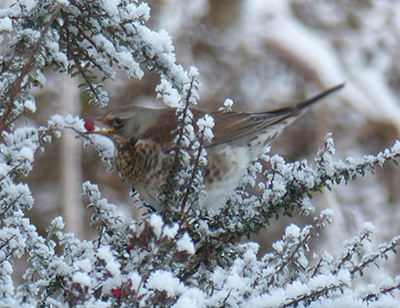2022 seems to have been the year of the number 17:
17 jars of stewed pears (from our own Dutch pear tree)
17 bottles of apple wine (from apples very kindly given to me by various customers and friends)
17 bottles of grape wine (from Scottish grapes given to me by a very kind customer, who got 100kg from a friend and aptly named ‘Grapeheart’)
17 tonnes per hectare of fruit & vegetables
‘Tonnes per
hectare’ is a measurement used in agriculture to value the productivity of a
farm. We don’t have a hectare and we didn’t grow 17 tonnes (which is 17 000 kg),
but I’ve converted my own kilos to tonnes and the size of my vegetable garden
to hectares.
I think this
is pretty good considering that I don’t use any artificial fertilizers or
pesticides.
I like working with numbers and keeping track on how much I’ve grown and to compare it with previous years and there definitely is an increase in our yields over the years. Adding compost to the soil every year, not digging too much and also growing green manure (an overwinter crop meant for leaving to die back) improves the quality of the soil massively and thus increases the yields. This is confirmed by various studies which all looked into different aspects of soil and yields of food. I am just obsessed with soil and thankfully I can experiment endlessly in my own back garden (I took 32 soil samples last year as part of my Natural Sciences study).

Another thing I’ve been keeping track on is the variety of birds seen in my garden and that has also been increasing over the years: we had 18 different bird species in 2015, but in 2022 we had 30 different species! Furthermore there is an index used by biologists to measure the biodiversity of an area (Simpson’s Diversity Index, should you be interested) and when I calculated our index value using my previous RSPB bird watches, I discovered that this too had increased and is now a very healthy 0.91, where the maximum value can only be 1. You see just by cutting out pesticides, leaving a couple of wild areas and planting some shrubs and small trees you can do your bit to help nature.
The chickens have been allowed in our back garden (they normally only roam the fields) and they loved it! I my naivety I thought that they would eat overwintering pests and fertilise the soil at the same time, but I forgot that they can also be little white feathered bulldozers! One of the white chickens could not leave the rhubarb plant alone and I watched as she purposely set out to dig up the entire plant. I couldn’t let that happen of course and had to put some wire over it, after which she tried to continue but discovered that standing on hard wire was not very pleasant and the was plant saved.

Harvey, the young cockerel, is losing his boyish peeps and his voice is starting to break. In other words, he will soon start crowing and the first couple of times are quite funny as he looks startled and he doesn’t know himself what is happening. As it so happens, on the last day of the year he stood at our back door, showing off his newly discovered crowing! It is quite cute, until he starts crowing at 4 am in the middle of summer.
The chickens are all back in the fields again, because, well, let’s just say that our sitting area is well fertilised!